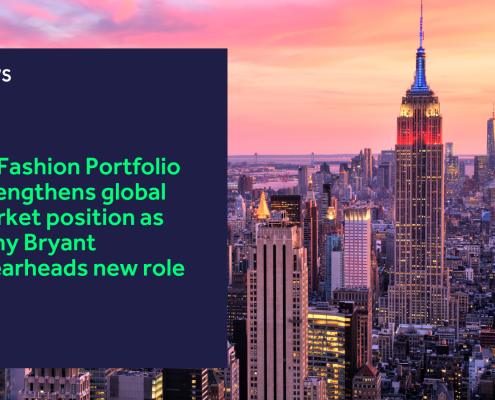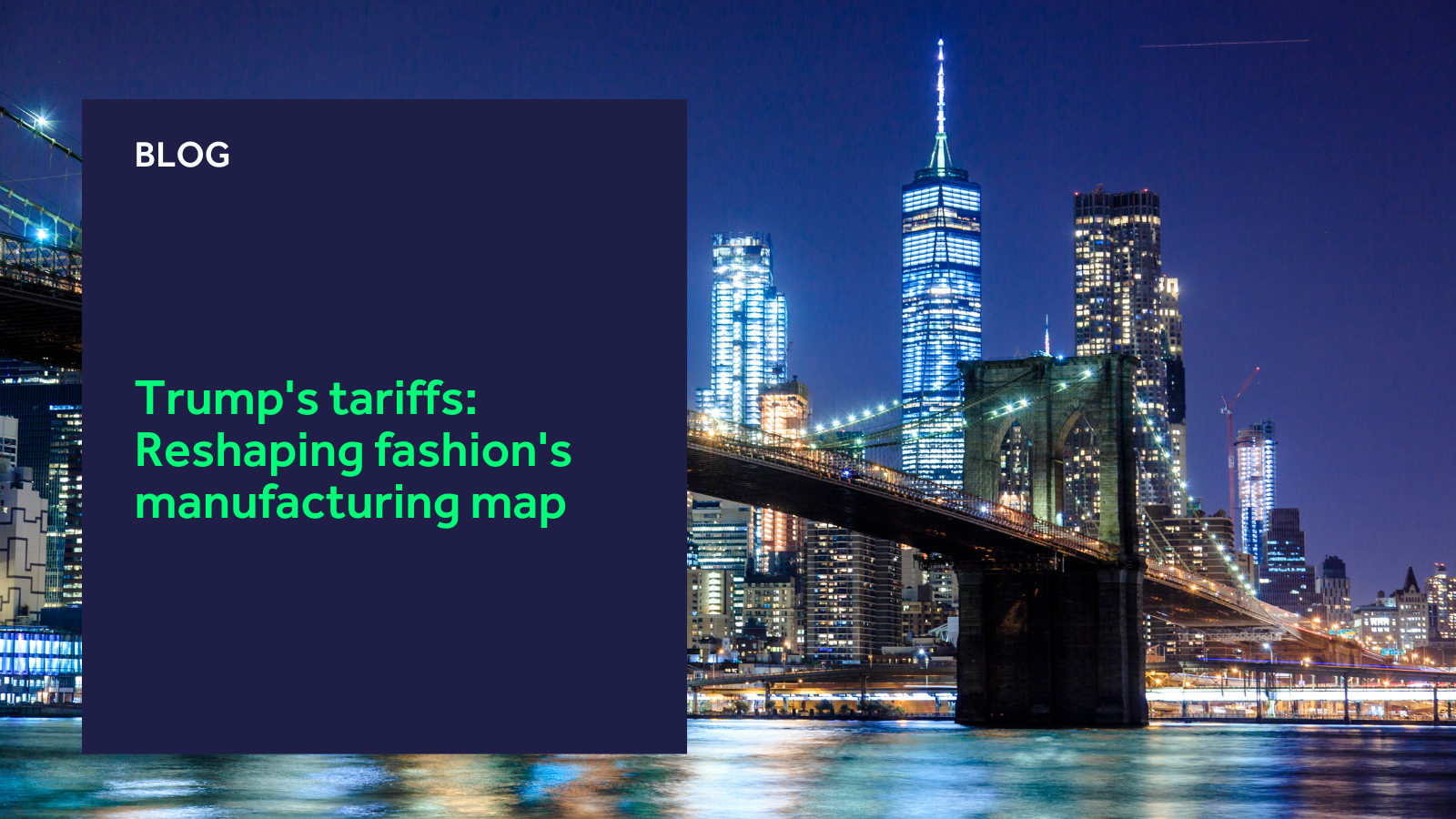Fashion now sits in a precarious position as Trump’s tariff policies are poised to shake up the global manufacturing landscape.
The Trump administration’s 10% increase on Chinese imports, alongside duties on Mexican and Canadian goods, means the industry faces new challenges in managing costs, supply chains, and consumer relationships.
Last year, Mexico had emerged as a potentially key nearshoring hub for North America… but the latest news could well upset and disrupt this position.
Brands nearshoring in Mexico are exposed
Before Trump won the U.S. election, Mexico represented a golden opportunity for North American brands looking to bring production closer to home.
The numbers were very compelling. Shipping times could be slashed to as little as two days compared to Asia’s 30-day average.
Analysts even predicted that nearshoring could boost Mexico’s manufacturing by $150 billion over five years.
Now that Trump is U.S. president again, however, his latest tariff increases have complicated the picture. Stephen Lamar, president of the American Apparel & Footwear Association, noted in a report by the Business of Fashion that:
“NAFTA made Mexico and Canada a safe harbour, and yet they’re getting targeted now too.”
Indeed, brands that have set up shop in Mexico are now exposed to Trump’s latest tariff increases, which could offset some of the chief benefits of nearshoring in the country.
Part of the attraction lies in the shorter distances between production sites and end markets, allowing brands to respond faster to trends while bolstering their supply chain agility.
However, labour is typically more expensive in countries like Mexico than in traditional hubs, so the additional increase in tariffs makes it even more costly to nearshore closer to the U.S.
Of course, the tariffs on China won’t disappear either – meaning brands will have to bite the bullet and bear the brunt of the costs somewhere.
Will brands seek to diversify elsewhere to combat the tariffs?
The short answer is yes and no.
Brands may look to other countries, like in Europe, but it is unlikely that this will counter the current tariffs, largely because Trump has said he will “absolutely” increase them for the European Union as well.
However, there is one country that may not be subject to such sharp tariff increases: India.
With that said, here’s the long answer:
While places like Mexico and Central America have risen in popularity as nearshoring destinations for North American brands, their European counterparts have considered countries like Morocco.
Morocco is a strategic destination like Mexico due to its position just nine miles from Europe via the Tanger Med Port. It offers the potential to ignite EU and African trade.
The port boasts a dedicated textile corridor and efficient customs procedures, allowing brands to create and ship products more effectively than in traditional manufacturing hubs.
Morocco, alongside Turkey, has grown considerably in popularity with European brands because they offer several advantages similar to those provided by Mexico and Central America for North American brands.
Brands like Decathlon have opened operations in Morocco and Turkey in response to mounting pressures to address the environmental impact of sourcing from far-away regions.
Moving further afield, one country that does look promising in light of all this is India.
Trump’s first round of tariffs hasn’t included India, and this is reportedly because the U.S. and India are set to negotiate in the coming weeks.
India’s conciliatory approach to the U.S. in the lead-up to the negotiations suggests that talks will go positive, with some reports even saying the tariffs imposed on China will bear fruit for India and its export business, particularly for technology.
This could also open the door for textiles and other fashion-related exports, but again, it’s early days, and until the negotiations conclude, we won’t know what will happen.
While the search for tariff-resilient manufacturing continues, brands face a complex global chess game.
Adopting a multi-regional strategy is likely to be the key to success for the most resilient fashion companies, allowing them to spread risk across different manufacturing bases and pivot quickly as geopolitical landscapes shift.
What does the new landscape look like for different types of brands?
Undoubtedly, the new tariffs will have ripple effects for all fashion brands, but the severity will differ depending on the type of brand.
For example, fast fashion companies like Shein and Temu will face the most immediate impact from the closure of the “de minimis” loophole, which allowed orders that were $800 or less to be shipped duty-free.
These digital-first retailers must now reimagine their business models built on direct-to-consumer shipments from China.
The challenge extends beyond simple cost increases since it threatens their fundamental ability to maintain their ultra-fast supply chains and competitive pricing.
On the other end of the spectrum, luxury brands and high-end fashion houses will face different challenges.
While they typically have greater pricing power to absorb increased costs, they must balance maintaining quality standards with potential manufacturing relocations.
Luxury brands often require highly skilled artisans and specific manufacturing capabilities that may not be readily available in new manufacturing locations.
Companies like LVMH must consider how to maintain their exacting standards while potentially shifting some production to nearshore locations.
In the mid-market segment, we have perhaps the most vulnerable brands.
The likes of Gap and Columbia Sportswear face pressure from both ends. They lack the pricing power of luxury brands but operate at scales that make ultra-fast fashion’s digital model impossible.
To mitigate risk, these companies must find ways to maintain quality and manage costs while spreading production across multiple regions.
How will all this impact the end consumer?
Ripple effects are the most appropriate way to describe the impact of the tariffs because it seems all but inevitable that consumers will pay the price when all’s said and done.
Last year, Columbia Sportswear CEO Timothy Boyle quite openly stated:
“We’re just going to deal with it and we’ll just raise prices… it’s going to be very difficult to keep products affordable for Americans.”
Meanwhile, the National Retail Federation estimated that the tariffs would result in a $50 billion reduction in American consumer spending power.
While the full impact on the consumer is still unclear, trade organisation Footwear Retailers and Distributors of America suggests that a 10% increase in inflation, exacerbated by the tariffs, does not mean retail prices will only rise by 10%.
It would mean the costs of goods sold increases by 10%, but the retail markup could actually be multiplied by 2 or 2.5 times… leading to a 25% increase for consumers.
What is the ‘ideal’ solution?
The sad and bleak truth is there is no silver bullet solution to the new tariffs.
Some will find success in nearshoring, others will just pay the price, while a few with enough resources can “tariff engineer” their products to survive.
Experts almost unanimously agree that the best path is to tariff engineer, but the problem is that only huge companies with significant budgets and resources can successfully pull it off.
Tariff engineering essentially means changing a product’s structure so that it can be reclassified and made exempt from certain tariffs.
For brands who are unable to make a pivot to tariff engineering, their options are much more limited. It will be as simple as paying the price or shifting operations to a new country… which is a costly affair in and of itself.
Ironically, though, the concluding message isn’t all that different than before Trump’s tariffs: reliance on single-region manufacturing is over.
The pandemic, the blocking of the Suez Canal, and other supply chain disruptions have shown that having a diverse footprint is wise.
Brands already needed to ditch the linear supply chain model to combat volatility while preserving their bottom line.
The only difference now is that tariffs have made it much, much costlier to do so.
Enjoyed reading this? We regularly publish insights about the fashion industry. To read more, click here.
 https://www.k3btg.com/wp-content/uploads/2024/03/K3-strengthens-global-market-position-blog-header.png
900
1600
Jordan Heal
https://www.k3btg.com/wp-content/uploads/2022/03/K3_Master_Colour_RGB.svg
Jordan Heal2024-03-11 10:58:242025-02-21 14:37:51K3 Fashion Portfolio strengthens global market position as Tony Bryant spearheads new role
https://www.k3btg.com/wp-content/uploads/2024/03/K3-strengthens-global-market-position-blog-header.png
900
1600
Jordan Heal
https://www.k3btg.com/wp-content/uploads/2022/03/K3_Master_Colour_RGB.svg
Jordan Heal2024-03-11 10:58:242025-02-21 14:37:51K3 Fashion Portfolio strengthens global market position as Tony Bryant spearheads new role

